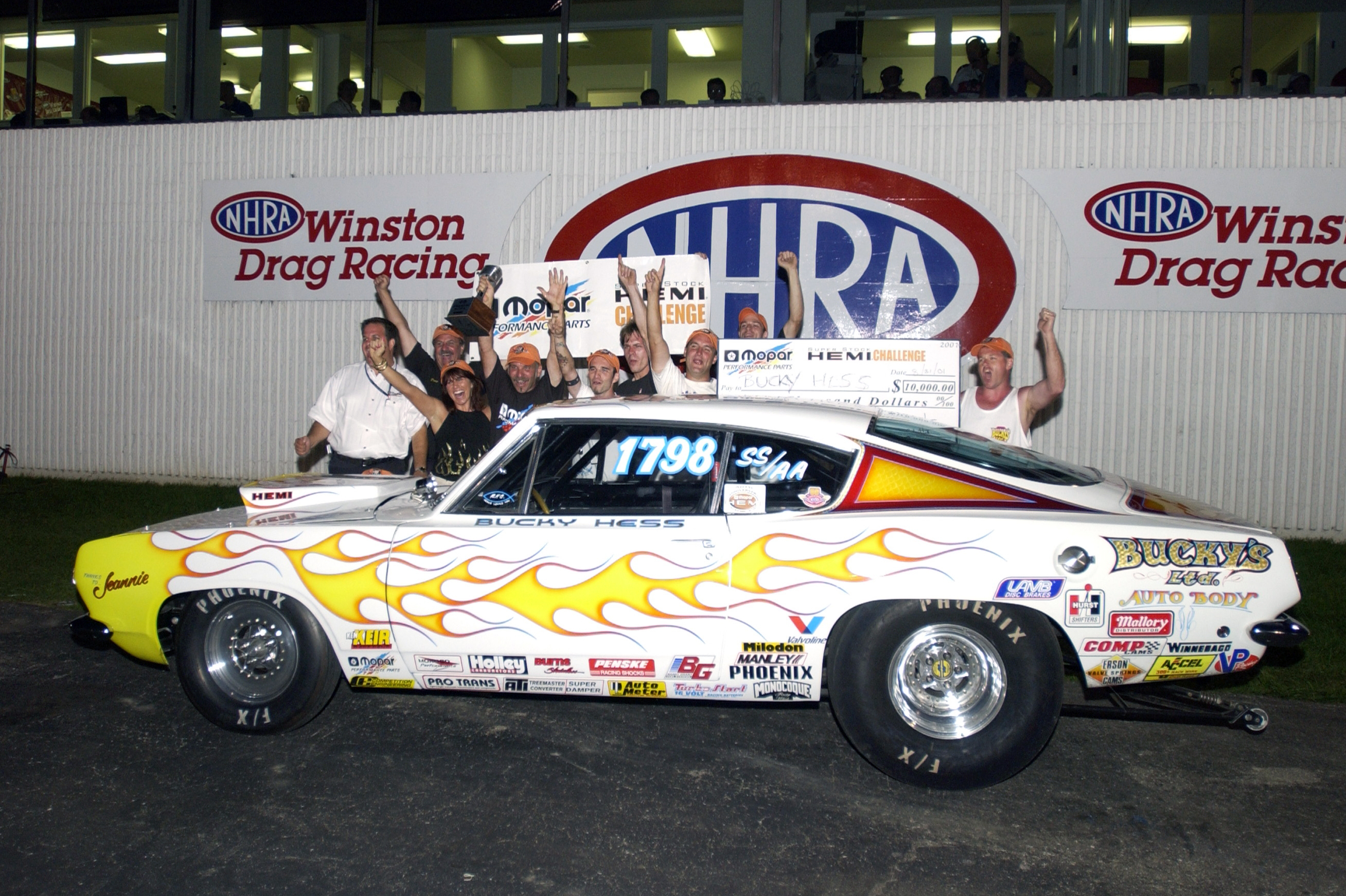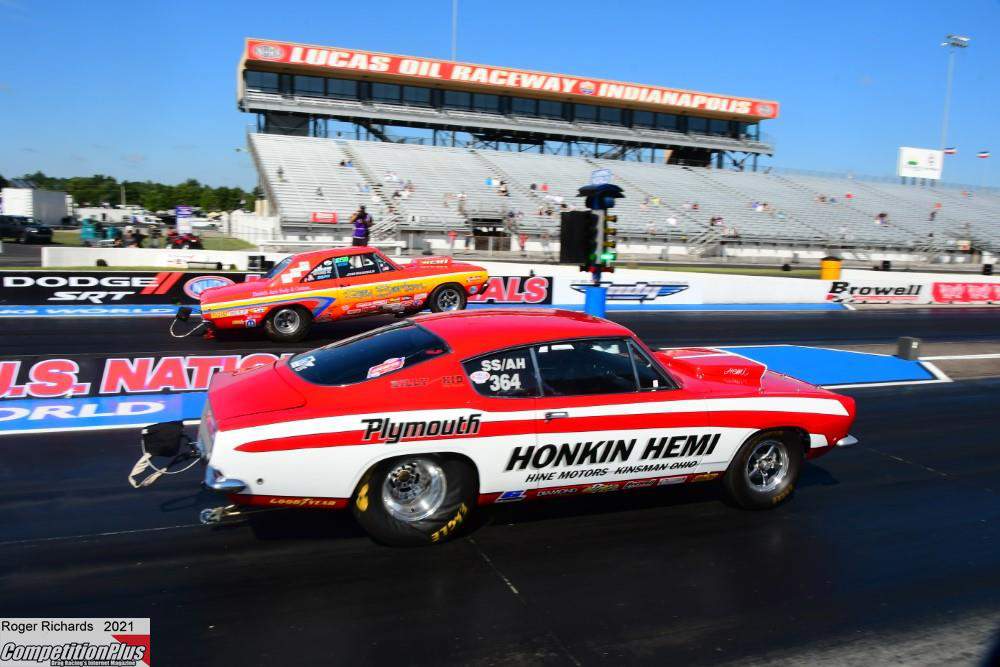THE MASSIVE DODGE HEMI SHOOTOUT HAD A HUMBLE BEGINNING


When noted drag racing historian Bret Kepner served as a Sr. Editor for the legendary drag racing magazine Super Stock & Drag Illustrated, he had no idea an assignment would one day spawn into one of the more revered drag racing programs.
"Steve Collison had this grandiose plan for this mega Indy coverage like nobody had ever done before in Super Stock & Drag Illustrated," Kepner explained. I think he later came up with a name like the I Team or something stupid, but he had a lot of people working on a lot of different things."
When it came time to doling out assignments, Kepner knew what he wanted to cover, and it wasn't an eliminator.
In his assessment, as impressive as the nitro-belching Top Fuel dragsters and Funny Cars presented themselves, it was the top of the Super Stock food chain, Super Stock/A Automatic, that really got him excited. He figured it would appeal to those gearheads such as himself.
Now, you might ask, why is this a story? Sometimes the most significant institutions have the humblest of beginnings. One program which has become more than just a part of the Indianapolis Raceway Park U.S. Nationals has been the Dodge Hemi Shootout.
And to think, the groundwork was laid for this program when a journalist clamored to cover one crucial part of the class eliminations presentation at Indy.
"Almost every year after that, I covered the Super Stock/ A Automatics except for one season when there were just three cars in the class, and I just moved over and covered the Super Stock/H Automatics."
 Kepner is, and has always been, a drag racing purist and often believed if he could see the value in the simplest forms of drag racing, then others would most certainly share his sentiments.
Kepner is, and has always been, a drag racing purist and often believed if he could see the value in the simplest forms of drag racing, then others would most certainly share his sentiments.
Kepner reached out to Ted Jones at Masters Entertainment for the 2001 event and brokered a deal with NHRA for the ESPN footage, and thus was born the first television coverage of the Super Stock/AA class eliminations.
Jones responded, "If you think you can make a one-hour or a half-hour show out of this, he said, I can probably get enough sponsors to pay for it."
At the time, Super Stock & Drag Illustrated, then renamed Drag Racing Monthly, had folded, and there was no avenue for Kepner to share what he felt was some of the best drag racing in the world.
"It was a dream come true because I didn't think I'd have anywhere to report on the Super Stock A Automatic thing anymore," Kepner admitted. "The show was probably one of the best I had ever been a part of."
Others agreed, namely David Hakim, the Mopar Performance Parts Marketing Director at the time. He convinced his bosses to put up money for the SS/AA Shootout and put key backing into the television presentation.
"We were one of those sponsors on the show," Hakim said. "It was an incredible show; the fans went nuts. The whole deal was kind of under the radar. The NHRA was blown away by the whole deal. I remember Graham Light just being taken aback by the popularity. I think that showed NHRA just how popular sportsman racing could be. It took off from there."
 Before it could take off, the Hemi Shootout had to be built on a solid foundation which it was. Starting in 1968, the Hemi Shootout was essentially the Super Stock/B Automatic class eliminations. Traditionally, in SS/BA and later SS/AA, there was traditionally only one, if any, non-Mopar in competition.
Before it could take off, the Hemi Shootout had to be built on a solid foundation which it was. Starting in 1968, the Hemi Shootout was essentially the Super Stock/B Automatic class eliminations. Traditionally, in SS/BA and later SS/AA, there was traditionally only one, if any, non-Mopar in competition.
"It has always been, for all intents and purposes, a Chrysler only show," Kepner confirmed.
The 1968 Super Stock division in NHRA brought in the "alphabet soup" of Super Stock. Before this, it was either Super Stock (for manual transmissions) or Super Stock/Automatic. The Super Stock division featured two heads-up options.
The alphabet soup of Super Stock was a precursor to Mopar's dominance in this arena when NHRA added 20 stick and 20 automatic classes, each with its own national records, handicapped, and all that other stuff. With four pounds per horsepower, the Mopars found their home at the top of the food chain.
"Because they were looking at 450 horsepower, 2000 pound cars, that fit into B, in the 1967 rules," Kepner said. "That's why, in the entire 1967 season, there was no Super Stock A record. There was never a car built that fit in the class. So in 1968, NHRA rearranged the weight break and made SS/A a five to six pound per horsepower class. And that's when the Barracudas and Darts fell into A."
Today's traditional version of the Super Stock/A and Super Stock/A Automatic now fall into a division created for these iconic machines - Super Stock/AH, for SS/A Hemi. With the advancement of automatic transmission technology, stick and automatics are now combined into one.
Today's Dodge Hemi Shootout is a far cry from those early days when Kepner lobbied for coverage of the NHRA U.S. Nationals SS/AA class eliminations in the magazine. It is so much better in many ways, at least on an entertainment scale. The program has been refined into a specialty, elite event with cars to match. It has survived the test of time, which has included an excessive cost to participate and even a non-publicized near elimination due to corporate budget cuts.
It was only through the persistence of individuals who built cars specific for the class, the lobbying power of Hakim, and the insistence of Kepner, headstrong on telling the drag racing world about the value of these niche cars, that this institution of class eliminations has survived for over a decade.





































